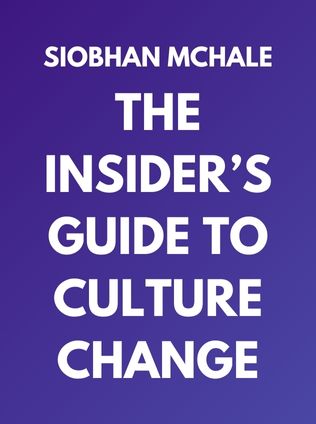
The Insider’s Guide to Culture Change
Creating a Workplace That Delivers, Grows, and Adapts
By Siobhan McHale
Published 02/2020
About the Author
Siobhan McHale is an acclaimed culture transformation expert and global executive who has worked across four continents. She has helped thousands of leaders create more agile and productive workplaces. McHale has been deeply involved in culture change initiatives in large, multinational organizations. One of her notable achievements was a radical seven-year change initiative at Australia and New Zealand Banking Group Limited (ANZ), transforming it from the lowest-performing bank in the country into one of the highest-performing and most admired banks in the world.
Main Idea
"The Insider’s Guide to Culture Change: Creating a Workplace That Delivers, Grows, and Adapts" by Siobhan McHale is a comprehensive guide that demystifies the process of culture transformation in organizations. McHale presents a proven four-step process called The Culture Disruptor, aimed at diagnosing current cultural issues, reframing roles, breaking deeply embedded patterns, and consolidating gains. Through this model, she helps leaders transform disengaged employees into change leaders, fostering an agile culture that outperforms.
Table of Contents
- Understanding Workplace Culture
- Diagnosing Your Current Business Environment
- Reframing Roles
- Breaking Patterns
- Consolidating Gains
Understanding Workplace Culture
Culture is often misunderstood and oversimplified. It is not merely about explicit values and behaviors. McHale emphasizes that culture is the “patterns or agreements that determine how the business operates.” These patterns are shaped by mental maps, roles, and behaviors within the organization.
A common myth is that culture can be changed by promoting new values and expecting immediate behavioral shifts. This approach often fails. True and lasting change requires addressing mental maps (the perceptions and beliefs people hold), roles (the part played by individuals in given situations), and patterns (the unwritten rules that guide behavior).
Mental Maps: These are the perceptions, beliefs, and values that individuals hold about their work. They are invisible but significantly influence behavior.
Roles: The roles people play in an organization can be redefined to facilitate change. For example, Southwest Airlines encouraged employees to take on the role of “servant leaders” to enhance customer service.
Patterns: These are the systemic, often invisible rules that persist within an organization. Identifying and altering these patterns is crucial for lasting cultural change.
"No matter how hard you try to change a culture by promoting new values (“Be bold! Be innovative!”), and then expecting your people to immediately embrace those values and alter their behavior accordingly, little, if anything, will change." — Siobhan McHale
To understand workplace culture, leaders must debunk common myths and focus on the three key elements: mental maps, roles, and patterns. By doing so, they can create a more accurate and effective strategy for cultural transformation.
Diagnosing Your Current Business Environment
Successful change leaders thoroughly examine both the internal and external environments to diagnose cultural issues. This involves understanding current trends, developments, and the competitive landscape.
Sign up for FREE and get access to 1,400+ books summaries.
You May Also Like
The Subtle Art of Not Giving a F*ck
A Counterintuitive Approach to Living a Good Life
By Mark MansonRich Dad Poor Dad
What the Rich Teach Their Kids About Money - That the Poor and Middle Class Do Not!
By Robert T. KiyosakiHow To Win Friends and Influence People
The All-Time Classic Manual Of People Skills
By Dale CarnegieQuiet: The Power of Introverts
The Power of Introverts in a World That Can't Stop Talking
By Susan Cain



















